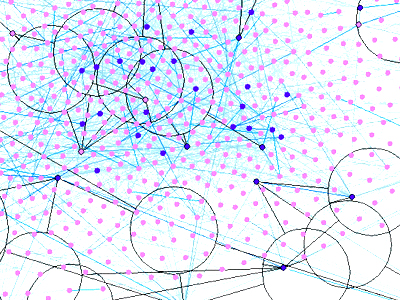Progress requires innovation, success spawns imitation, competition requires differentiation – and after 7+ years of “Web 2.0”, there are multiple sharing environments vying for our attention (and participation).
Content Creation
Blogging has morphed beyond it’s “personal diary” origins; Blogger, WordPress, and the various CMS platforms have moved to become a long-format publishing platforms that continue to evolve. My own experience with this blog (cazh1) and internal blogs at work has shown that “posts” are more essays, articles, documentation on what and how, status reports for projects or trips.
I’ve recently begin experimenting with a new (for me) type of blogging – I’ll call it short-format, and it hearkens back to the old-school, diarist model. This is a place to put short notes, observations, maybe sketches / photos for an Artist / Designer, code snips for a Engineer / Developer, or experimental prose for an Author / Poet. The format is exemplified by tumblr, a fast-growing platform that hosts some amazing content and is giving the old stalwarts some competition.
Content Sharing
But what about the Usual Suspects – Facebook and Google+? I don’t see these platforms as content creation engines as much as they are content sharing engines; ubiquitous Share This! links, the +1’s and Like buttons that give “social media” their differentiating characteristic; networks of contacts that are of a like mind, in your Circles or Smart Lists, add value and context to the original content.
I see Flickr and YouTube as hybrids. Flickr is driven by people adding pictures; you can see / browse / search, and it has a personal, sharing-my-photo-album quality. YouTube, in the other hand, is more like a new video broadcast network; lately, it seems like the number of personal videos is dwarfed by ad campaigns, political messages, and music / entertainment videos.
Antics with Semantics
Yes, I understand that you can Follow other tumblrs. Facebook pages and Google+ circles are creating content as profound and banal as the bloggers. And I’m glossing over professional networks like LinkedIn, which can be oversimplified as an electronic form of career networking. All of this has great value, is very relevant to the conversation – but all have subtle nuances, different use cases where they drive value.
Where does Twitter fit in? The best description to date seems to be micro-blogging; the 140-character limit forces a style and controls depth of meaning – Twitter is more of a broadcast medium, a virtual bulletin board or cocktail party, best understood by watching trending topics when events are breaking. Content is created, and RT’s and hash tags give weight to an ideas current mindshare.
An Excuse for Experimentation
Clearly, there is no one best answer when trying to figure out how social networks can drive a business. There are many platforms and technologies, all of which are evolving to deliver different messages and produce different results. There is no one best solution – and the only way to be able to glibly comment on how this might impact your business is by diving in, learning what these things can and cannot deliver. Or find someone who had done it, who is still doing it.
Just don’t go by what you read in airline magazines or see on TV – sound bites won’t cut it.
Questions? Comments? Suggestions? Send mail to webmaster at cazh1 dot com
© Jim MacLennan for cazh1, 2011. |
Permalink |
No comment |
Post tags: Blog, Blogger, business value, Facebook, Google, Google Plus, LinkedIn, networking, Social Media, Social Networks, Tumblr, Twitter, Web 2.0, WordPress, YouTube
All articles, blog entries, and other content on this site are licensed under a Creative Commons License




















